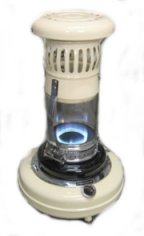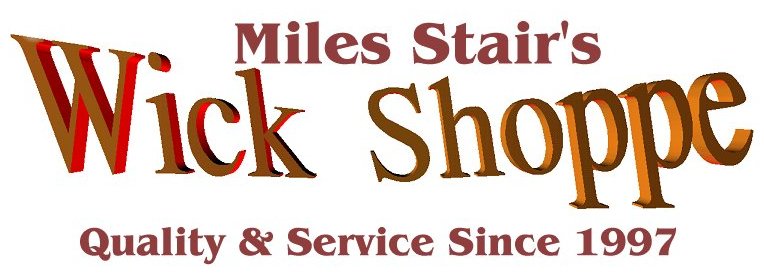|
World's Largest Selection of Wicks!
IDENTIFYING LAMP TYPES IN PICTURES - AMERICAN LAMPS This is a pictorial guide to lamp identification using the classical definitions of lamps. Only a few of each type of lamp are shown but the shape and overall purpose of each type of lamp, burner, font, shade, and typical parts are illustrative of the general type of lamp or part named. Most of the lamps covered here are center draft lamps but night lights, flat wick Argand burners, flat wick hall lamps and other flat wick type burner/lamps are shown as well. To keep this page from being so large it would not load on smaller computers or slower Internet connections, the photos are hyperlinked rather than shown on this page; click a hyperlink to load individual photos or illustrations. To identify if your lamp burner is a flat wick, center draft or Kosmos style burner, click here > Aladdin mantle lamps can be center draft (up through Model 10) or side draft and have the same general configuration as other lamps listed below. CENTER DRAFT LAMPS: Charles Upton purchased the Leonard Henkle flame spreader patent of Jan. 15, 1884, U.S. patent No. 292,114. Upton marketed the new lamps under the brand name "Rochester," his lamps being made by E. Miller until 1892. Many other lamp manufacturers quickly began to produce center draft lamps with their own patented designs for flame spreaders. On August 26, 1890 for patent # 239,565, Henkle wrote: "My invention relates to what are known as Argand or central-draft lamps, which employ cylindrical wicks and inner and outer wick-tubes, and are provided with inside and outside drafts for maintaining constant and even currents of fresh air to both sides of the flame. My invention consists in the construction and arrangement of a centrally-located thimble or auxiliary tube arranged over the inner or central draft-tube, having means for retaining the same in proper position and attaching it to the draft-tube, the thimble being provided with perforations which regulate the currents of air to the inner surface of the flame....." CENTER DRAFT LAMP TYPES - Table Lamps: By far the most common center draft lamps. Over a hundred different American manufacturers and a dozen prominent European manufacturers produced center draft table lamps. The manufacturers were in intense competition so they patented every part of their lamps which could be patented, then defended their patents vociferously. The burner design and profile, embossing patterns, wick lift mechanisms, etc, were all slightly different and thus can be used to identify individual manufacturers. Plain, non-embossed table lamps were sold very inexpensively to the masses, with embossed fonts and feet being more unique and rare. Table lamps were also made with burners using flat wicks, Kosmos style wicks and duplex flat wicks. The German Wild & Wessel Vulcan Kosmos lamp was imported by Bennet B. Schneider and sold in America as the "Imperial" burner with American threads to directly replace American duplex burner to produce more light - the remainder of the lamp being of American design and manufacture. Table Lamp options included various types of shades and globes, supported by shade rings or tripods. Photos: Table Lamps (Top two illustrations, "Hand lamp" lower left, "Trophy lamp" lower right.
Banquet Lamps: All are tall with a decorative pedestal between the base and the font. Placed in the center of a table the tall lamp could illuminate the entire area without shadows. Elegant banquet lamps are a joy to behold. Due to the higher initial cost of these lamps they are proportionally rare and more expensive to purchase on eBay. Table lamps generally had at least a 6'’ ball shade and usually an 8'’ ball shade or 8'’ to 10'’ dome shade (or "globe") supported by a shade ring. Photos: Banquet Lamps (More photos of banquet lamps here) Bracket Lamps: Shown in the illustration are metal font, center draft bracket lamps. Many flat-wick fonts were also used in bracket lamps and many had unique reflectors with a thin space between two layers of glass which was filled ("mirrored") with liquid mercury. Installed high against a wall these bracket lamps with reflectors could illuminate a considerable area, not good enough for reading but certainly enough light for easy navigation. Many inexpensive (at the time) bracket lamps were sold with glass fonts and flat wick burners. Photos: Bracket Lamps - With Reflectors
Chandelier Lamps: Center draft fonts, usually size #0 or #1, with anywhere from a single font to multiples up to 8 fonts. Standard size #2 burner lamps are infrequently found in chandelier lamps because the heat from #2 burners can exceed 6,000 BTU/hr and multiple burners near the ceiling might have been dangerous. Chandelier lamps are rare and were quite expensive at the time; virtually all were elegant custom creations by the many artisans in the Meriden, CT area using parts such as drop-in fonts made by (and marketed through) the font manufacturers. Photos: Chandelier lamps Glass Hand Lamps Photo: Glass hand lamps Gone With The Wind Lamps: Originally labeled as "Decorated Table Lamps," these lamps were distinctive in having glass or pottery vase-type font holders with matching dome shades. Many of the most popular lamps were made by manufacturers with considerable expertise in coloring and embossing glass and pottery who specialized in these lamps such as Consolidated, Florence and Success (P,L,B&G). These lamps were made from the 1890's into the 1920's. GWTW lamps usually have a pot insert font. The 1939 movie "Gone With The Wind" featured elegant table scenes featuring Decorated Table Lamps because the movie producer had them in his private collection. The movie was such a great success that it inspired many people to want a lamp of this design. Actual production of the lamps had ceased by the time the motion picture was released. The time period setting of the movie was during the Civil War, 1861 to 1864, and the lamps were not even invented until 25 years after CW-1, nevertheless "Decorated Table Lamps" became known as "Gone With The Wind" lamps. The irony is furthered by the fact most of the lamps used in the movie had been "electrocuted" and were thus not able to burn oil as originally designed! A lamp electrical cord is clearly visible in one scene where Melanie is carrying one of the lamps when lighted by electricity. Photos:
Gone With The Wind (GWTW) Lamps
Hall Lamps: Almost all flat wick burners because hall lamps generally had to be close to the ceiling and the excess heat - and light - from a center draft burner was not needed in that location. Photo: Hall Lamps Lanterns: Various shapes of lanterns are shown in the illustration. All are flat wick burners. The chimney was protected by spring wire or other external means. Because lanterns were self-contained and designed for carrying the chimneys were necessarily short and thus did not burn too efficiently, but they were intended for outdoors use and the fumes produced were not generally a problem. Photo: Lanterns Library Lamps: Virtually by definition Library Lamps have #2 size center draft burners, 14'’ dome shades with crystals hanging from the shade ring. Photos: Library Lamps Mammoth Lamps: All Mammoth lamps are center draft and have hanging lamp fonts. Mammoth Lamps typically require a 4 ½'’ base, pinched throat chimney. The only "true" Mammoth lamps were made by B&H (#89), Globe Incandescent #2, Pittsburgh, and Standard #2. Miller called their store lamp a Mammoth Lamp but it used a 4" slip-fit store lamp chimney. Photos: Mammoth Lamps Night Lamps:
Piano Lamps:
Store Lamps: Store lamps by modern interpretation are hanging lamps using a 4 3/16'' wide, 2.5'' diameter wick (#3L), usually a metal shade, a 4'' base chimney with a standard bulge, and the wick height is adjusted with a rod at the bottom of the font. The various manufacturers of store lamps often labeled them as "Mammoth lamps" but now we usually reserve the term "Mammoth" to refer to those lamps with the same general configuration but using the wasp-waist "Mammoth" chimney. Photos: Store lamp illustration (Photos of some store lamps here) Student Lamps: Student lamps had a fuel font separate from the burner to eliminate as much as possible a shadow beneath the light source and the size of the burner (light output) was generally smaller than that used for other types of center draft lamps: the light was closer to the book and the HEAT produced by the burning lamp was reduced to make reading more comfortable. The height of the burner was also adjustable to fit user preference. Student lamps could have one or two individual burners connected to the font and the quality of the lamp could vary from plain models to extraordinarily fabulous "Harvard" style student lamps produced by P&A, W&W and others.
(More information on student lamps here and here) Table Lamps: See top item in this list. Vase Lamps: Vase lamps were very fancy table lamps generally with handles for carrying. Most vase lamps were of the drop-in font variety. These days we separate "vase lamps" from GWTW lamps by the type of font, Vase Lamps usually having a metal font holder whereas GWTW lamps had a glass or ceramic font holder.
|
|

 . .
. .